The fun and festivities of Yule are upon us! This weekend we celebrate midwinter with our annual Yule Party. The food is being planned and prepared and the Yule Tree stands decked in its sparkling glory.
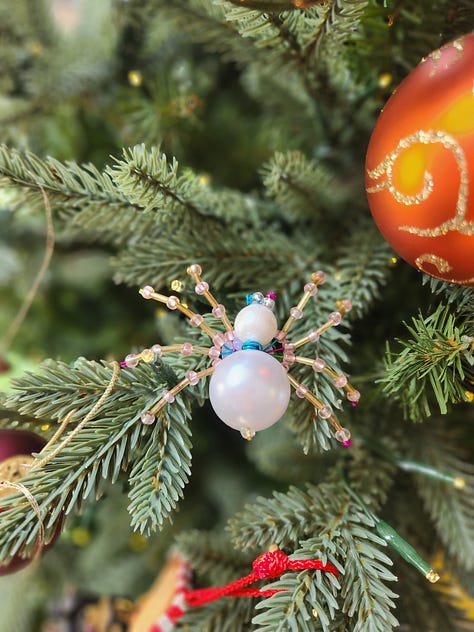
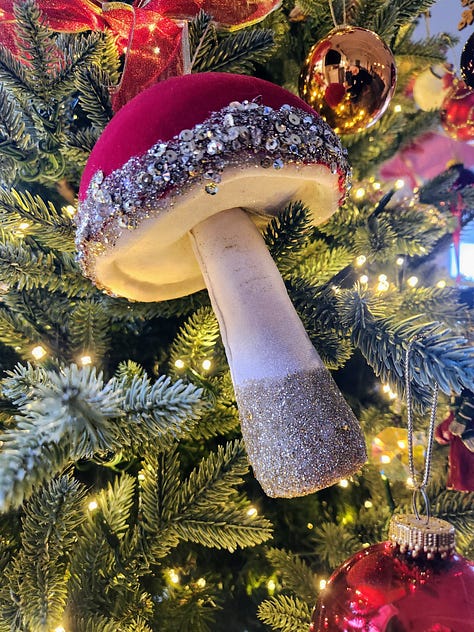
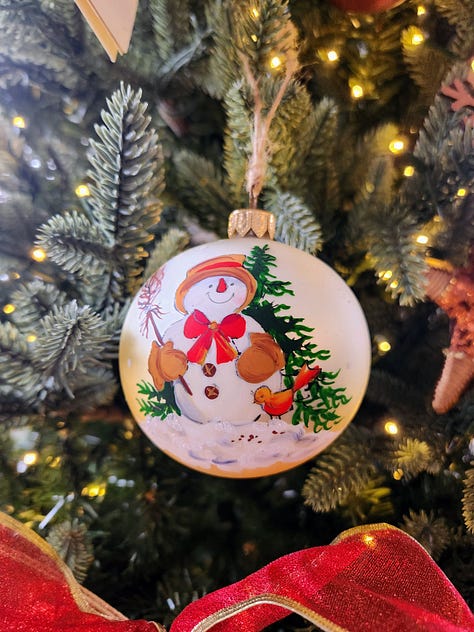
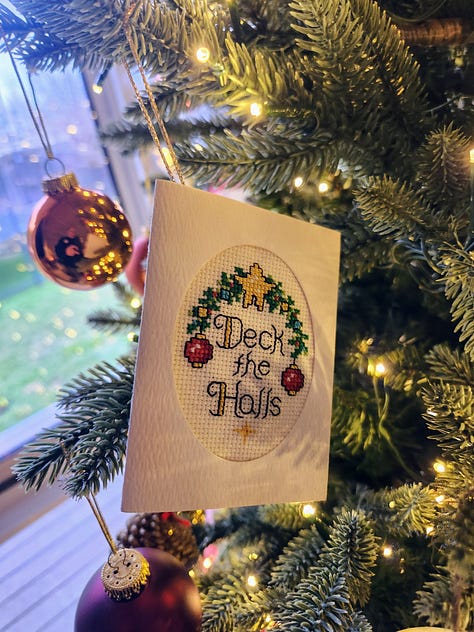
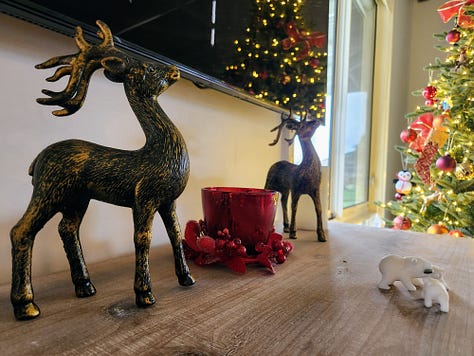


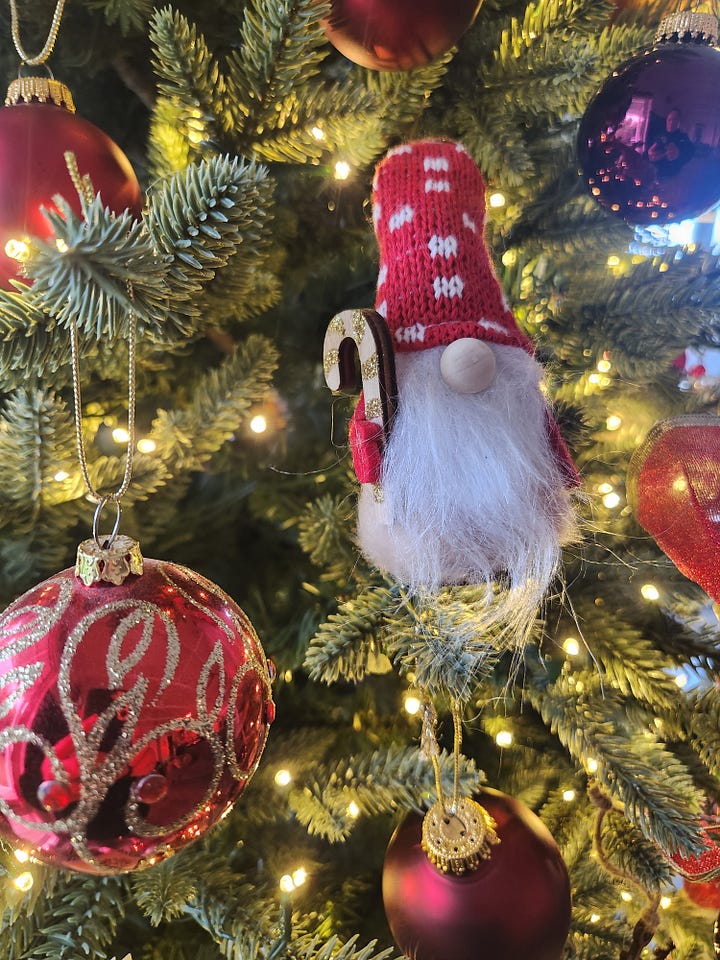
The Yule Log (or ashen faggot in our household) is decorated and ready for its big night, the orange slices have been dehydrated and strung. The Podłaźniczka is hanging over our dining table and the Badnjak has been made and sits in the rafters over our kitchen.
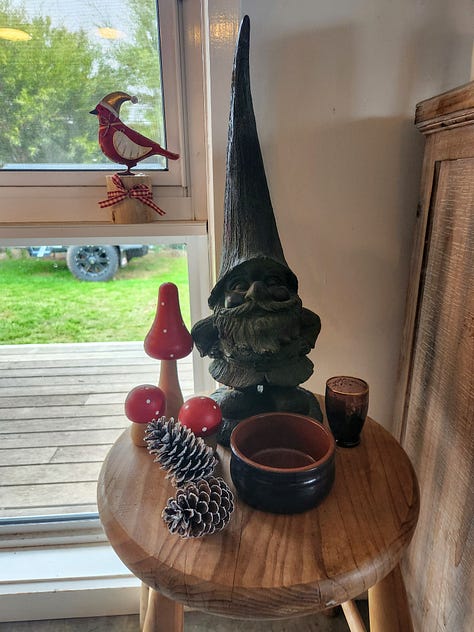
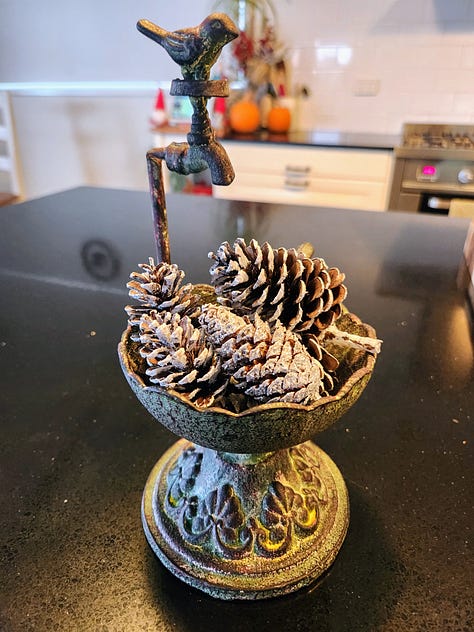

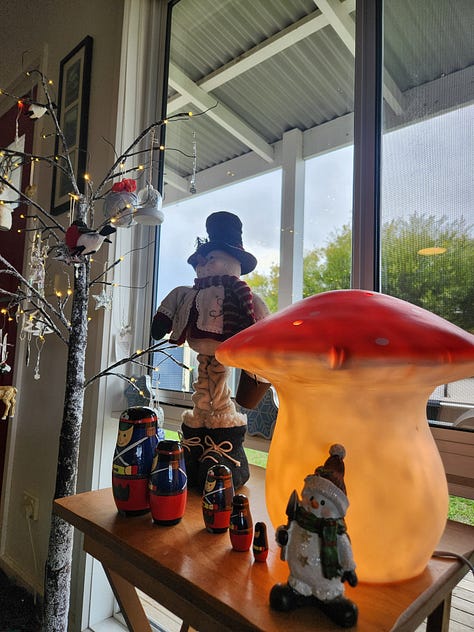

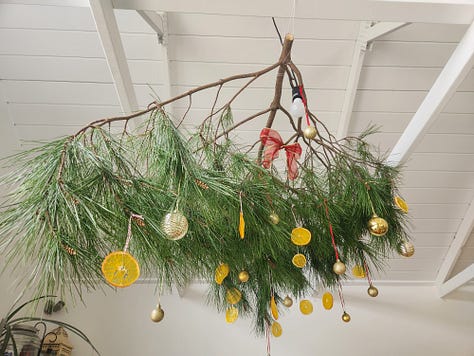
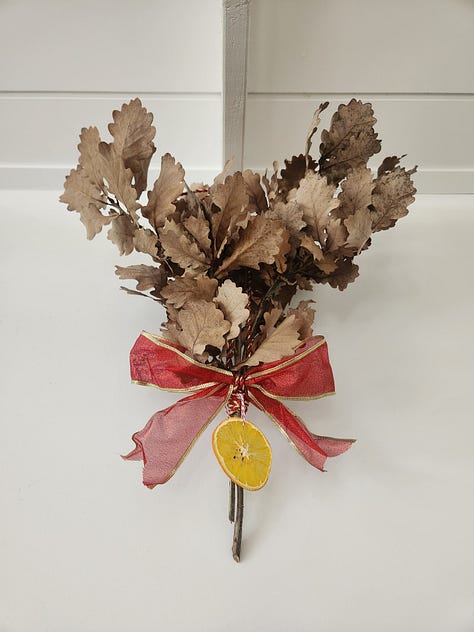
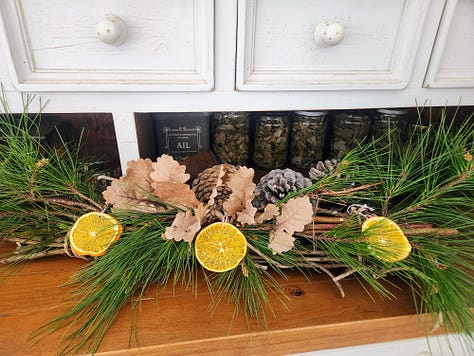
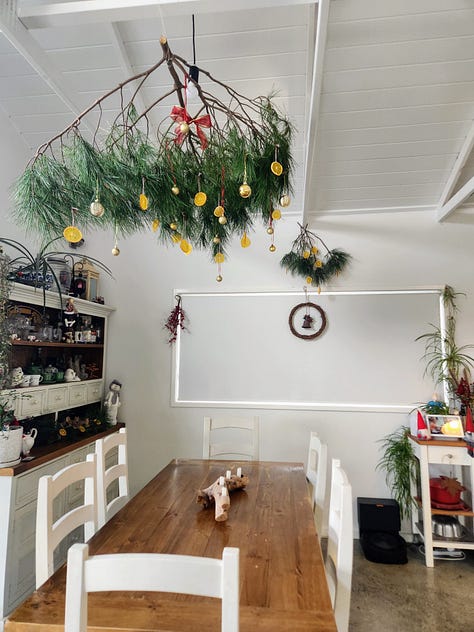
This week’s article explores the traditions of the Yule Log and its Eastern European cousin, the Badjnak. It also dives into the history and folklore of the Yule or Christmas Tree, the Polish Podłaźniczka and Yule candles.
The Yule Log
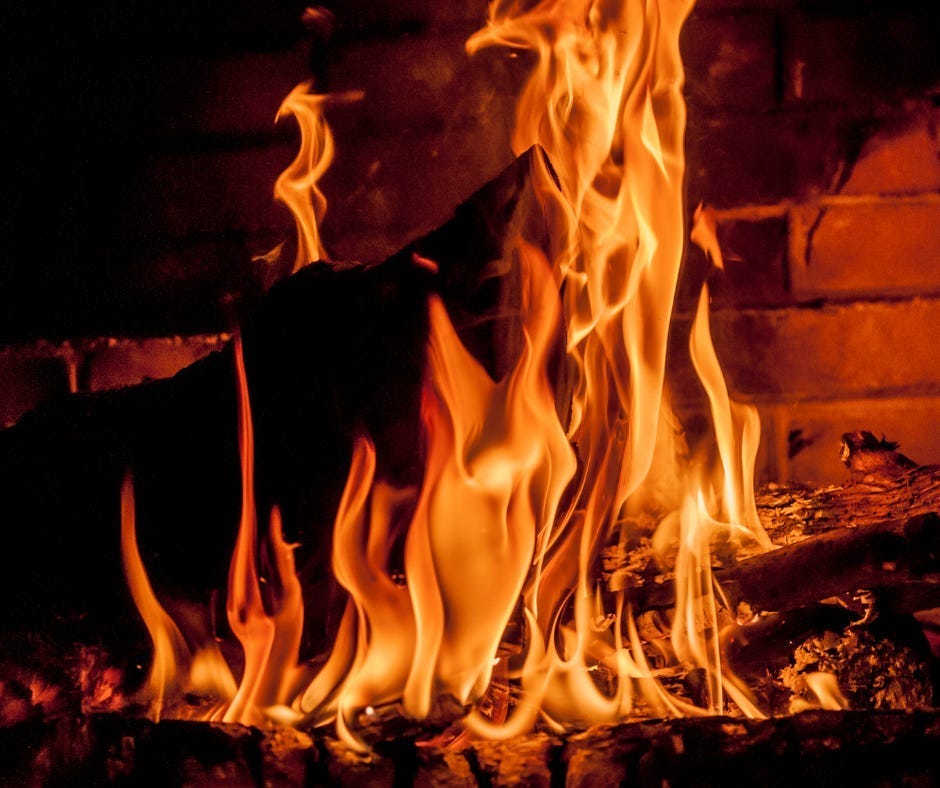
The Yule Log tradition can be traced back to ancient pagan rituals practiced by various European cultures, including the Slavs, Celts, and Germanic tribes. One of the earliest recorded references to the Yule log comes from Norse mythology. In the Norse tradition, the trunk of an oak tree was cut down during Winter Nights in Autumn and brought inside at the winter solstice. One end of the log was placed into a ritual or communal fire, which was burnt until the last piece, sometimes taking many days to burn completely. The Norse called this log the Yule Log or Jólablót (Yule sacrifice), and it was burnt to honour Thor, the god of war, thunder and lightning. The Yule Log was believed to have protective and purifying properties, and its ashes were often scattered over the fields to ensure a fertile harvest in the coming year. Charcoal from the Yule Log was also kept under beds to protect the household from lightning.
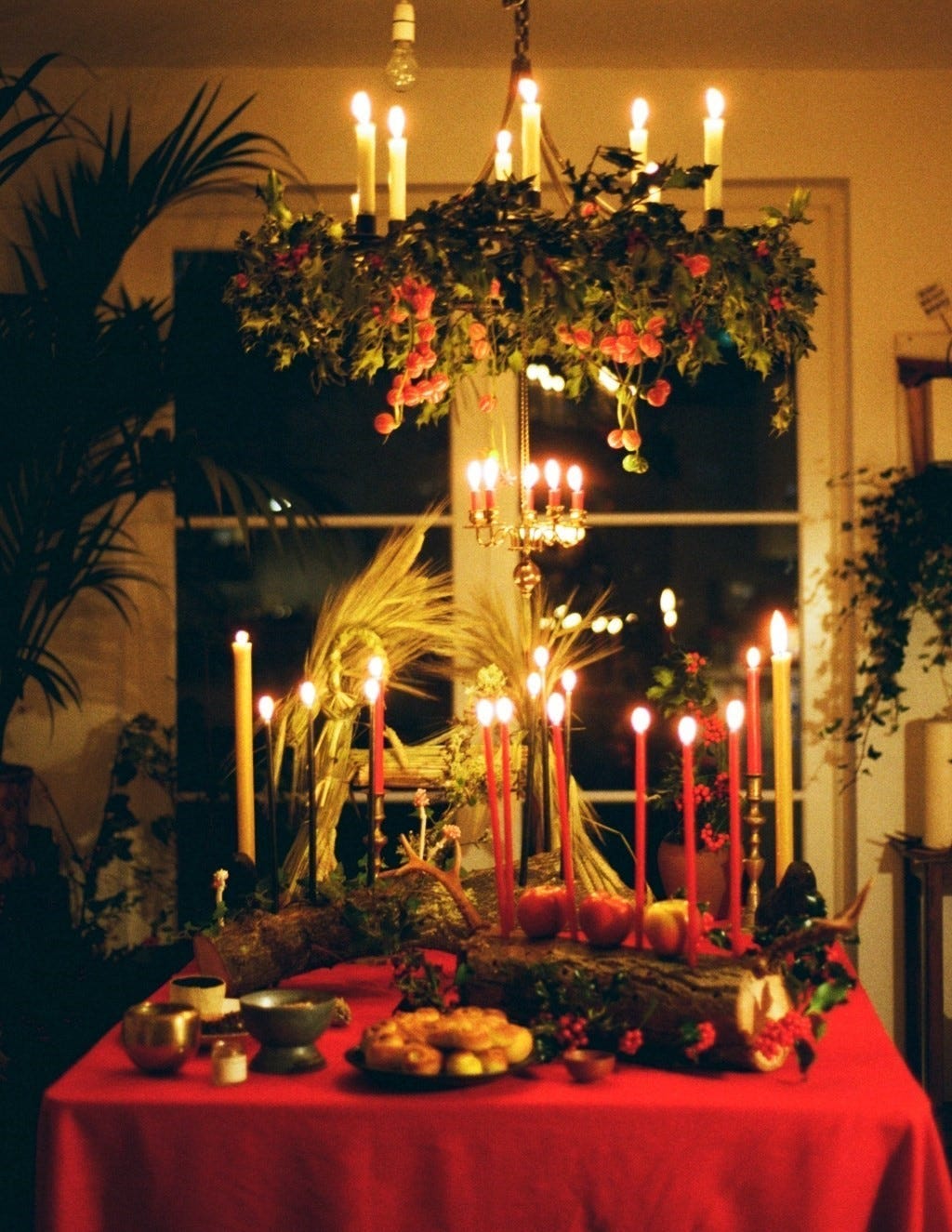
As Christianity spread throughout Europe, many pagan customs and traditions were assimilated into Christian celebrations. The Yule Log tradition was no exception. The symbolism of the Yule Log was adapted to fit Christian narratives, associating it with the birth of Jesus Christ and his role as the “Light of the World.”
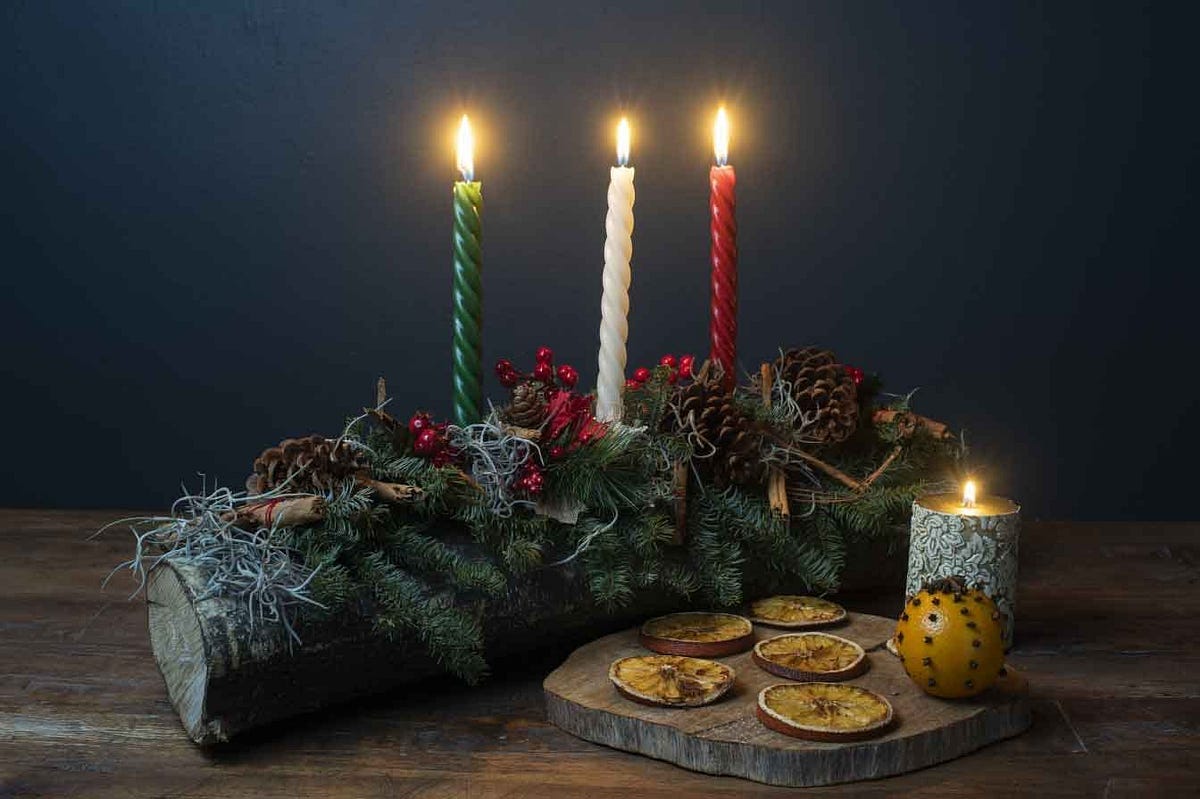
German Yule Log Traditions
This extract from Christmas in Ritual and Tradition by Clement A. Miles (1912), provides a good overview of the German Yule Log traditions:
In Hesse and Westphalia, for instance, it was the custom on Christmas Eve or Day to lay a large block of wood on the fire and, as soon as it was charred a little, to take it off and preserve it. When a storm threatened, it was kindled again as a protection against lightning. It was called the Christbrand. In Thuringia a Christklotz (Christ log) is put on the fire before people go to bed, so that it may burn all through the night. Its remains are kept to protect the house from fire and ill-luck. In parts of Thuringia and in Mecklenburg, Pomerania, East Prussia, Saxony, and Bohemia, the fire is kept up all night on Christmas or New Year’s Eve, and the ashes are used to rid cattle of vermin and protect plants and fruit-trees from insects, while in the country between the Sieg and Lahn the powdered ashes of an oaken log are strewn during the Thirteen Nights on the fields, to increase their fertility.

English Yule Log Traditions
In Celtic traditions, the Yule Log was considered a sacred symbol representing divine masculine energy and the sun. Logs from oak trees were used in England, while birch tree logs were preferred in Scotland. These logs were often decorated with evergreen branches, holly, and ivy. The Yule Log was called Yule Clog in the northeast of England, the Yule Block in the Midlands and West Country, Gule Block in Lincolnshire and in Cornwall, Stock in the Mock. In Wales, the Yule log is called Boncyff Nadolig or Blocyn y Gwyliau, meaning the Christmas Log or the Festival Block. In Scotland, it’s called Yeel Carline, meaning Old Wife Yule, while in Ireland it’s called Bloc na Nollag, meaning the Christmas Block.
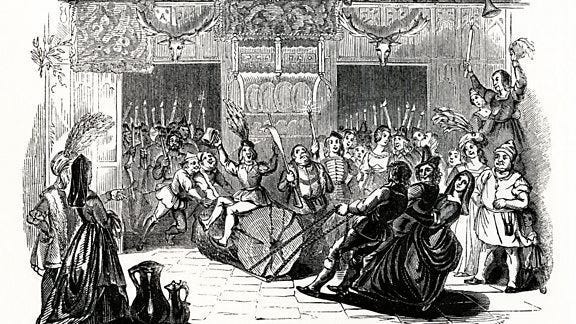
English clergyman and poet, Robert Herrick (1591–1674), described one form of the English Yule Log custom in his poem, Come Bring the Noise.
Come, bring, with a noise,
My merry, merry boys,
The Christmas Log to the firing:
While my good Dame she
Bids ye all be free,
And drink to your hearts’ desiring.With the last year’s Brand
Light the new Block, and
For good success in his spending,
On your psaltries play,
That sweet luck may
Come while the log is a-teending.
Folklorist Laurence Gomme (1853–1916), also commented on English Yule Log customs:
From there being an ever-burning fire, it has come to be that the fire must not be allowed to be extinguished on the last day of the old year, so that the old year’s fire may last into the new year. In Lanarkshire it is considered unlucky to give out a light to any one on the morning of the new year, and therefore if the house-fire has been allowed to become extinguished recourse must be had to the embers of the village pile [for on New Year’s Eve a great public bonfire is made]. In some places the self-extinction of the yule-log at Christmas is portentous of evil.
The English West Country, particularly around Devon and Somerset, have a folk custom similar to the Yule Log called the ashen faggot. This Christmas Eve tradition is still celebrated and involves burning a large bundle of ash tree sticks in a hearth fire. Bundles of sticks for kindling are traditionally called faggots, although these days it is now a pejorative term. The ashen faggot is usually nine or multiples of nine green lengths of ash preferably all from the same tree, bound with thin straps of bark called withies. Those participating in the burning of the ashen faggot sing carols and every time a withie bursts, they toast it with a drink. In some customs, unmarried women would each choose a withie and the first one whose withie snapped would be married the following year.

In pubs around the region, bets were placed on the length of time until the last withie burst, with proceeds going to charity. Once the last withie burst, one or all of the sticks would be saved, to be placed in the centre of the following year’s ashen faggot. It was believed that any household that did not burn the ashen faggot would face years of bad luck and in some places, it was believed that burning the ashen faggot would protect the household from evil spirits, and later the Devil.
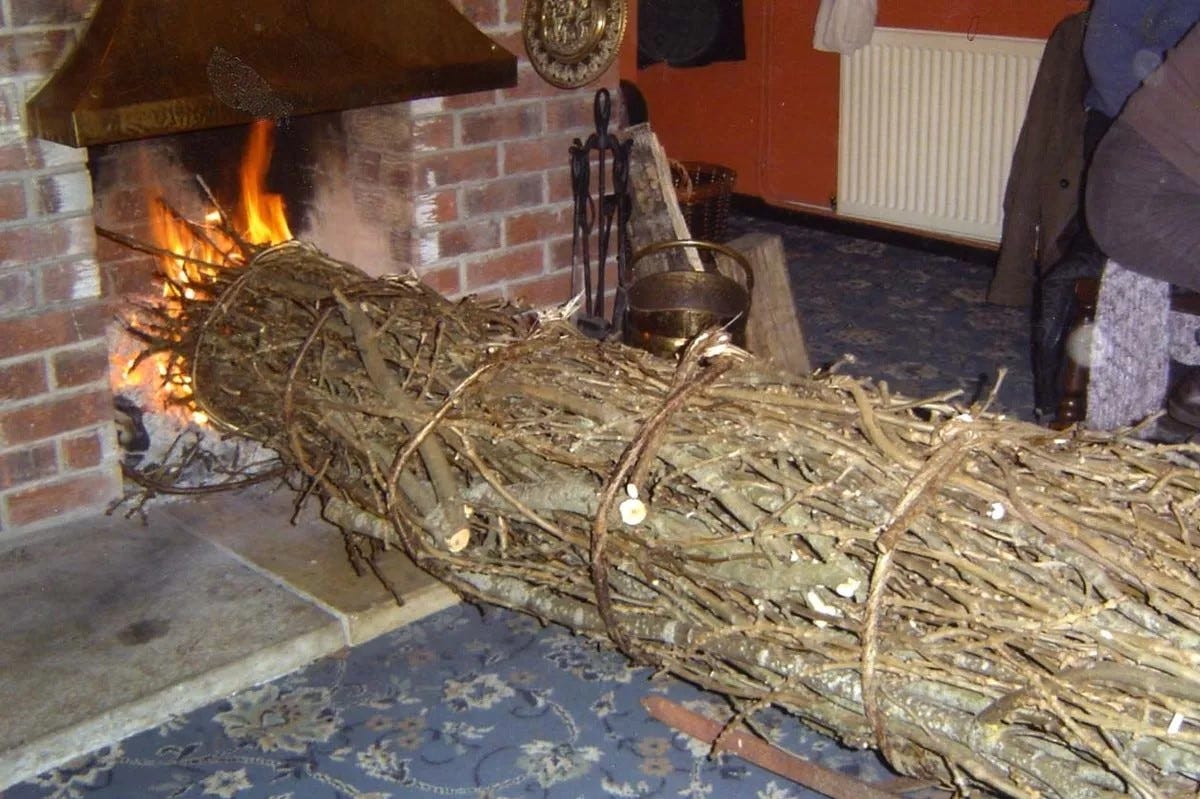
Our household practices the ashen faggot custom. It’s a great way to use the winter-pruned branches from our backyard orchard. Prunings from three of our trees, one apple, one pear and one nectarine are cut to size and tied into three separate bundles of nine branches each. Each of the three bundles is tied with three withies and those three bundles are tied together with three more withies. The bundle is left inside to dry until the week before Yule when it’s decorated with evergreen and oak leaf branchlets, dried orange slices and pinecones.
On the night of Yule, when everyone has had dinner and a slice of our traditional Yule Log Cake for dessert, the decorated Yule bundle/log is brought outside to the bonfire. It’s ‘blessed’/cheered by everyone with mulled wine or warm spiced apple juice and then thrown on the fire to cries of well-wishing. Sparklers are broken out for the children and everyone continues to make merry.
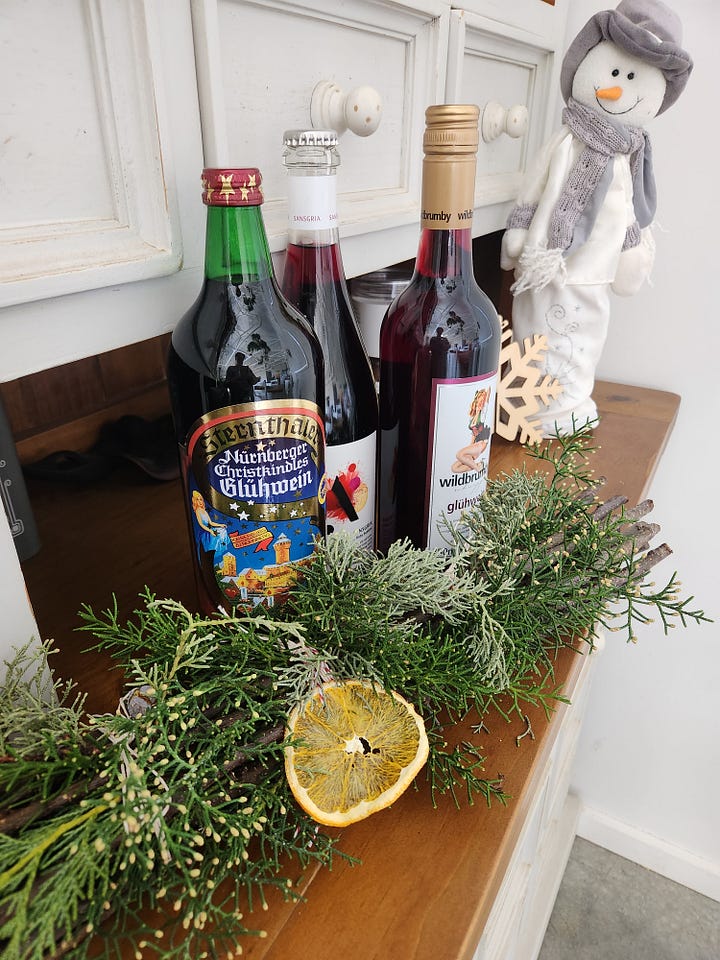
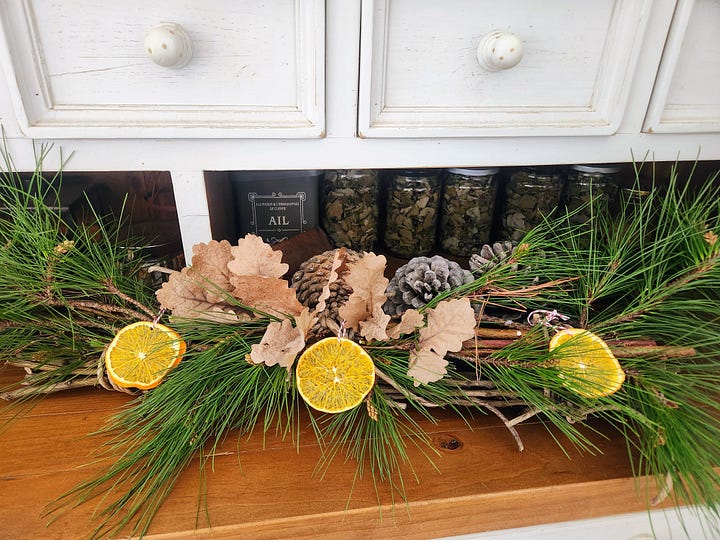
France

Most countries in Europe have some kind of Yule Log tradition. In France, particularly in Provence, the Yule Log is called le calingaou. On Christmas Eve the calingaou was traditionally brought inside while the family sang carols. It was then blessed (splashed) with wine and thrown on the fire. Charcoal from the log was kept as a remedy for various ills.
In some parts of France such as in Orne, the log is called the tréfoir de Noël and was traditionally burnt every evening over the twelve nights of Christmas. Its charcoal was either placed under the bed to protect from lightning; used in medicine for people and animals; or to help cows calf by mixing it in their fodder; or thrown into the soil to keep grain crops healthy.
In Périgord, the remaining unburnt parts of the log were fashioned into or added to a plough as it was believed to make seed prosper. It was also believed to help poultry thrive if added to their food over the twelve days of Christmas. In Brittany, the Yule Log was called tison and was also used as protection against lightning or its ashes were sprinkled into wells to keep the water clean.
When traditional hearths began to disappear from French homes and were replaced by wood-burning stoves, the burning of the Yule Log was replaced by the sweet and much more tasty bûche de Noël (Yule Log cake), which you can read about in a previous article, Winter Feast.
Italy
In Italy, the Yule Log tradition is called the Ceppo and was first recorded in the 11th century, although the tradition has far older pre-Christian roots. Christmas in Tuscany was once called the Festa di Ceppo (Feast of the Log). In the Tuscan village of Gorfigliano the tradition of Natalecci is celebrated on Christmas Eve. Tall chestnut tree trunks are mounted on most of the prominent hills around the village and piled high with juniper branches. At nightfall, the juniper branches are set alight and the bonfires flame into huge torches, while the village’s church bells ring out.
The short (2:08 mins) video below shows the lighting of these Christmas torches in Gorfigliano in 2023.
More commonly throughout Italy, a large log was brought into family homes and laid in their hearth on a bed of juniper. Led by the head of the household, everyone would sing Ave Maria del Ceppo and the children danced, while the log was blessed with offerings of wine and coins before being set alight. In some places, blindfolded children would beat the Ceppo with sticks or pincers.
Similar to the Yule Log traditions of other European countries, the Ceppo was believed to bring good luck. Misfortune, mistakes and bad choices were burned in the Ceppo’s flames, wiping the slate clean for the New Year. A bit of the Ceppo was kept in the house to start next year’s log and to protect the house from fire and lightning. Ashes were placed in wells to keep the water flowing, and at the roots of fruit trees and vines to help them bear good harvests. However, it was considered an ill omen if the fire went out before the end of the night, as it heralded tragedy for the family in the coming year. If the flames cast someone’s shadow without a head, it was an even worse omen, as that person would supposedly die within the year.
In some regions of Italy, the Ceppo evolved into tiered shelves in the shape of a tree, known as the Tree of Light. The bottom shelf displayed the family’s treasured Presepio (creche or Nativity scene) and the remaining shelves displayed greenery, fruits, nuts and presents. The top of the Ceppo was usually adorned with an Angel or star.

Spain
Most Spanish Yule Log traditions are similar to those we’ve already encountered except for one amusing tradition from the Catalonian region, the Tió de Nadal. The modern Tió (Spanish for Uncle) is a hollow log about 30cm long that stands on two legs with a smiling face painted on its higher end, often wearing a red cap. From the Christian Feast of the Immaculate Conception on December 8 until Christmas Eve, children are tasked with taking care of the Tió by keeping it warm with a blanket and feeding it every day with offerings of fruit, vegetables and drink.
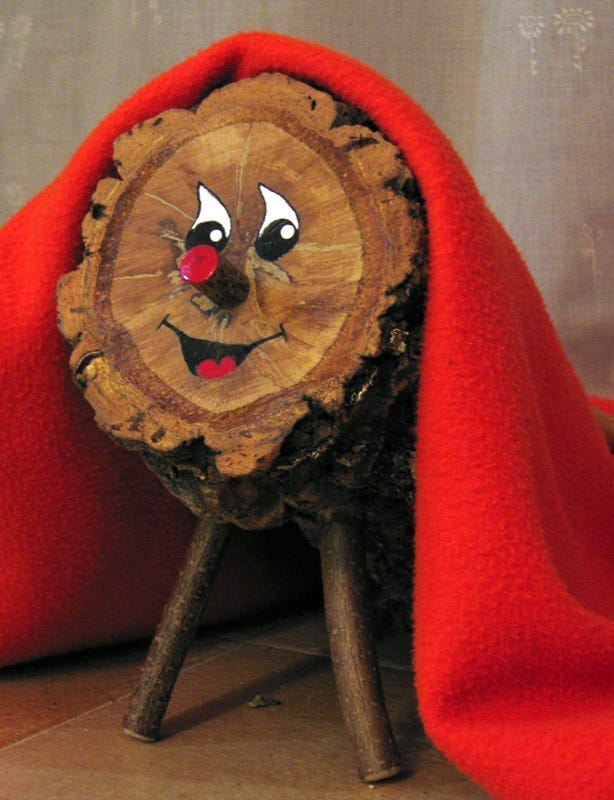
On Christmas Eve, the children are sent into another room, usually the kitchen, while the adults fill the log with small gifts and lollies. The children are then allowed back into the lounge room where the Tió is usually located, and proceed to beat the log with sticks while singing a special song, demanding the Tió poop presents and treats. One person puts their hand under the blanket and takes a treat before the beating and the singing starts again. The presents and treats are communal and enjoyed by the entire family, while the bigger and individual gifts are given on January 6, the day of Epiphany. The Tió is popularly called Caga Tió, which means ‘pooping (or shitting) uncle’.

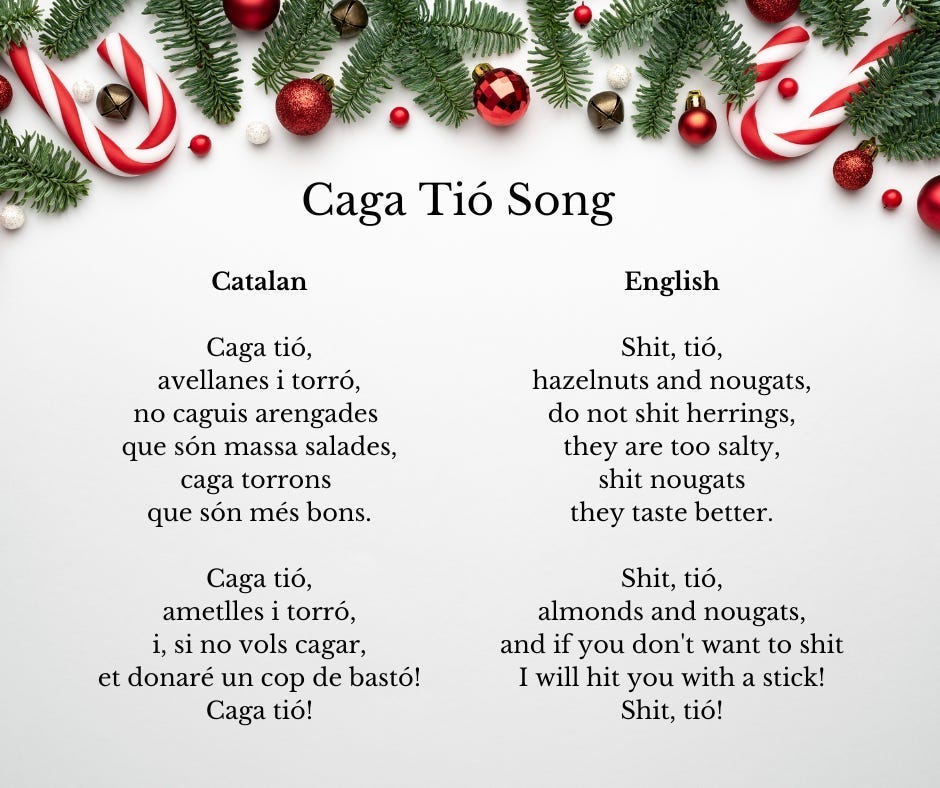
This short (1:34 mins) video describes the history and tradition of the Caga Tió de Nadal.
Eastern Europe
Many Slavic countries share similar beliefs and celebrate similar Yule Log traditions. In Serbia, Croatia and Montenegro, the badnjak log, which was considered to be a person or representation of the ancestors, was cut from young oak trees on the morning of January 6 (Christmas Eve in the Julian calendar). Splinters from the tree felling were taken home and placed where prosperity was most desired, such as beehives, in the hen-roost, or in the dairy room. The badnjak stump was blessed with grain, bread and wine or rakia (fruit brandy) and the log was brought back to the house, leant near the front door and decorated according to local custom. In the evening it was ceremonially brought into the home and burned in the hearth.
It was customary for the polaznik, the first person to visit the family on Christmas Day, to strike the badnjak repeatedly to make as many sparks as possible in order to bring good fortune and joy to the household. Some regions believe that no family members should fall asleep before the log is split or burned through by the fire lest they will die without warning in the coming year. The splitting of the log by the fire was celebrated with wine and toasting. After the log was split by fire, the thinner end was kept in the fire to continue burning while the thicker end was taken out and used according to local customs, such as making crosses from the wood and placing the crosses under eaves, on the fields, in the meadows, vineyards, orchards, and apiaries.
The celebration of the badjnak began as a family custom and became a more public celebration, held in military barracks and eventually churches and royal palaces. Although most Serbs, Croats and Montenegrins no longer have hearths to burn large logs, they maintain the tradition of the badjnak by mounting twigs of oak with brown leaves still attached, to a place of significance in their households.
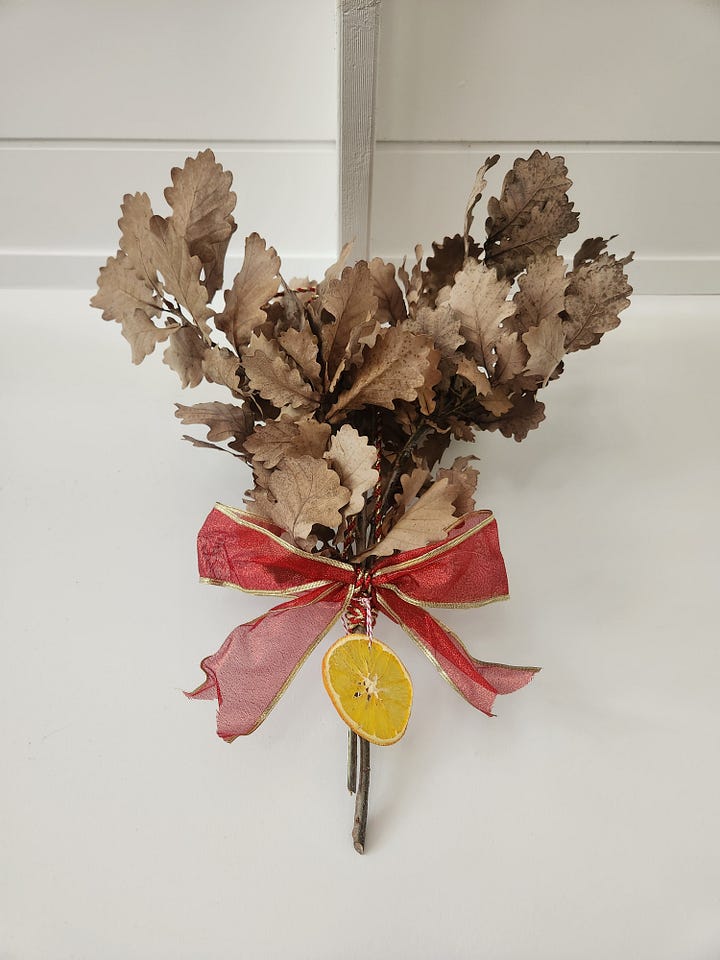

Yule Candles
The Yule Log tradition in Scandinavian countries was eventually supplemented or replaced by a large candle lit on Yule Eve and kept burning throughout the holiday festivities. The lighting of the Yule candle is often done as a family ritual. It is believed to bring light, protection, and blessings to the home during the dark winter months. The candle is placed in a prominent location, such as a window or a central spot in the living room, where it can be seen and enjoyed by all.
In some Scandinavian countries, such as Sweden and Norway, it is common for families to have a special candleholder called a julstake to hold the Yule candle or candles. The julstake is typically made of wood or metal and often has decorative elements like stars or angels. Alternatively, candles are placed on a decorated wreath.
The Yule candle is also associated with certain customs and superstitions. It was believed that if the candle burns brightly and steadily, it signified good luck and a prosperous year ahead. However, if the flame flickered or went out, it was considered a sign of impending misfortune. To prevent this, some people placed a coin under the candle or practice other rituals to ensure its uninterrupted burning. These days, the Yule candles are often electric, to avoid distinctly unfestive house fires (and bad luck from flickering flames).
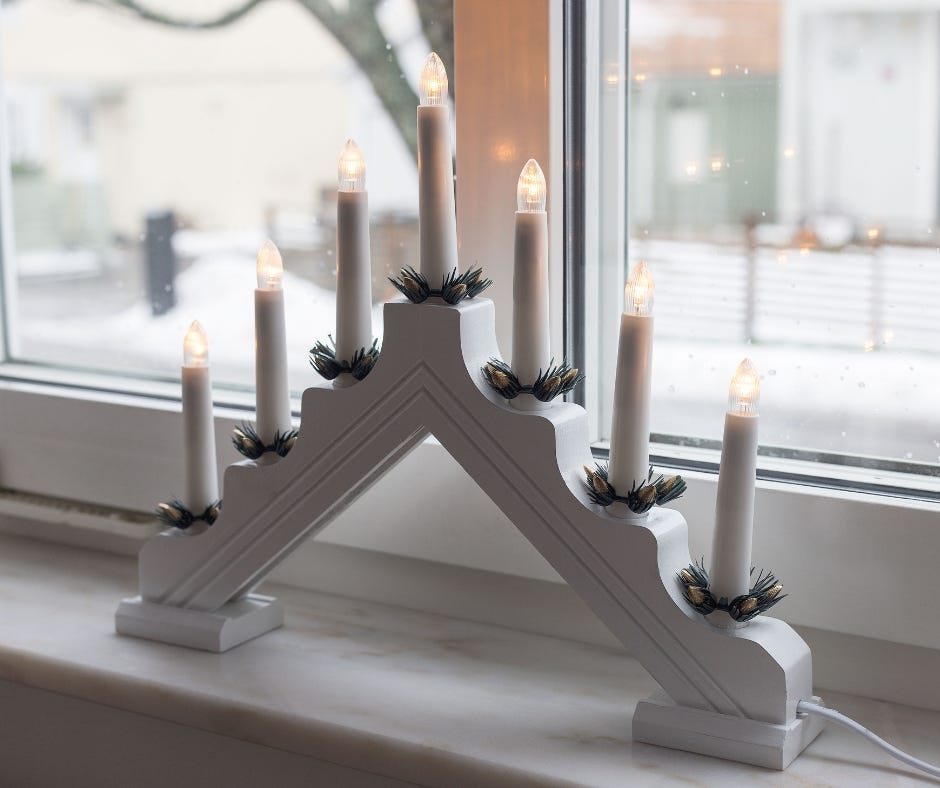
If you can’t cut down a whole tree and burn it indoors in a giant hearth, why not decorate your own Yule log or make an ashen faggot for your fireplace or fire pit? If these options aren’t possible, light some Yule candles or turn on some electric candles this winter to celebrate an ancient Yule tradition that still resonates with meaning, and enjoy the hyggelig atmosphere of the season.
The Yule/Christmas Tree
The tradition of bringing an evergreen tree into the house and decorating it is a key feature of the Christmas or Yule season and is related to the Yule Log tradition. In my household, I love this tradition so much that the tree is up twice a year. To celebrate Yule and midwinter throughout July, and again for our Australian Christmas celebrations in the middle of summer. Each occasion has a different theme and different decorations: golds, reds, oranges, evergreens, toadstool mushrooms, winter-themed and northern hemisphere symbols for Yule; and for our Aussie Christmas, gold and turquoise, candy canes, eucalyptus leaves and branches, wattles, callistemons, Australian native animals, and decorations made by my children.


Roots of the Yule Tree
The tradition of the Yule or Christmas tree, as we know it today, has its roots in ancient pagan customs and religious symbolism. As we’ve discovered in previous articles, the use of evergreen trees, such as firs, spruces, and pines, in winter celebrations can be traced back to ancient civilizations, including the Romans, Germanic peoples and Celts. These cultures believed that evergreen trees symbolised life and fertility, even in the midst of winter. They would decorate trees with ornaments and candles as a way to honour the winter season itself and the winter spirits or gods associated with the season.
Some scholars believe the Christmas tree tradition evolved from the pre-Christian Germanic Yule Log traditions. Others believe that the modern tradition of the Christmas tree can be directly traced back to Germany in the 16th century. According to popular Christian folklore, the Protestant reformer Martin Luther was inspired by the beauty of the stars shining through the evergreen trees while walking through a forest one winter evening. To recreate this magical scene, he brought an evergreen tree into his home and adorned it with lit candles, which symbolised the stars, and was the first recorded use of candles as tree decorations.
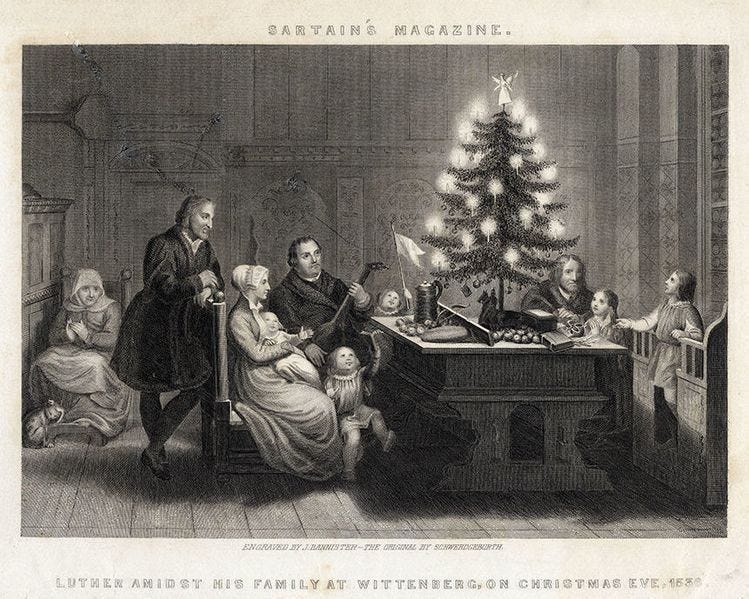
However, there are earlier references to decorating Christmas trees in guildhall records from the 1400s in Northern Germany, and what is now Estonia and Latvia, where such trees were decorated with sweets for the enjoyment of the guild apprentices and children. One chronicle from 1584 describes a tradition from Lyfflandt Province in which a spruce tree was erected and decorated in the market square, where young men “went with a flock of maidens and women, first sang and danced then set the tree aflame.” Pastor and chronicler Balthasar Russow in his Chronica der Provinz Lyfflandt.
In Eastern Europe, an old Slavic, pre-Christian folk tradition was practised by peasants until the early 20th Century, where the branch of a fir, spruce or pine tree called podłaźniczka, was suspended from the rafters of the home, usually above the dinner table for the celebration of the Koliada winter festival. Although the Christmas tree has become popular in Eastern Europe, it has not fully supplanted the podłaźniczka, and is again becoming popular with a revival of folk practices.
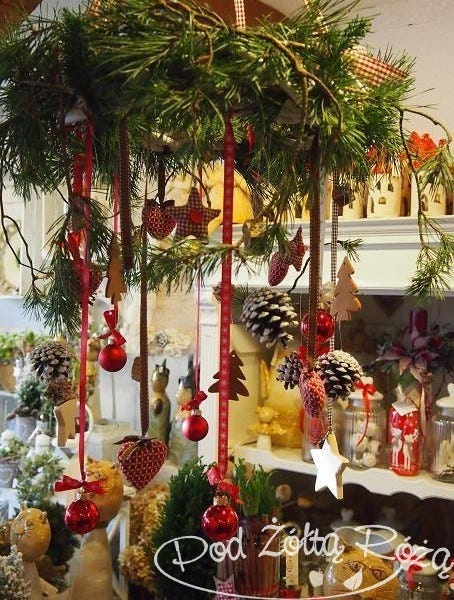
A German folktale about the Christmas Fairy claims faeries brought the first Christmas tree to the city of Strasburg. It was retold by Frances Jenkins Olcott in his book Good Stories for Great Holidays published in 1914.
The Story of the Christmas Fairy
Long ago near the ancient city of Strasbourg, a young and unmarried count named Otto, known as “Stone-Heart,” embarked on a great hunt on Christmas Eve. As he rode alone, he stumbled upon a spring called the “Fairy Well” and decided to rest there. To his surprise, the water was warm and comforting despite the cold weather. As Otto laved his hands in the water, he felt a small, soft hand grasp his right hand and take away his gold ring. Bewildered, he returned to his castle.
That night, while lying on his couch, Otto heard the hounds baying, the drawbridge lowering, and small footsteps in the adjacent room. He discovered a group of dancing fairies clad in sparkling robes, surrounded by a magnificent Christmas Tree adorned with diamond stars, pearl necklaces, and other precious jewels. Among the fairies was Ernestine, their queen, who returned Otto’s lost ring from the Fairy Well. Overwhelmed by the enchantment, Otto fell in love with Ernestine and they danced together.
Their love blossomed, and they were married the next day with great pomp and splendour. However, Ernestine had one condition: Otto must never speak the word “death” in her presence. They lived happily for many years until one day when they were about to go hunting. Impatient for Ernestine, Otto uttered in anger, “You would make a good messenger to send for Death!” At that moment, Ernestine disappeared with a cry, never to be seen again.
Deeply remorseful, Otto searched in vain for his beloved. He spent the rest of his life grieving for her. Every Christmas Eve, he set up a lighted tree in the room where they first met, hoping for her return. But she never came back. The castle eventually fell into ruins, yet there is still an imprint of Ernestine’s delicate hand embedded in the stone arch above the castle gate.
The Story of the Fir Tree
Hans Christian Andersen wrote a rather sad story about the fate of a fir tree, cut down and used as a Christmas tree before being discarded. It is too sad to repeat but he does describe the beauty of the Christmas tree and how they were traditionally decorated by the upper classes in the 1800s:
The fir tree was put into a great tub filled with sand… The servants, and the young ladies also decked it out. On one branch they hung little nets, cut out of coloured paper; every net was filled with sweatmeats; golden apples and walnuts hung down as if they grew there, and more than a hundred little candles, red, white and blue, were fastened to the different boughs. Dolls that looked exactly like real people — the Tree had never seen such before — swung among the foliage, and high on the summit of the Tree was fixed a tinsel star. It was splendid, particularly splendid.” Hans Christian Andersen (1805–1875). The Fir Tree.

The Story of the Christmas Spiders
In German and Eastern European folklore, there is a charming story that explains the origin of decorating Christmas trees with tinsel and the presence of spider decorations on the tree. One version of the story goes that once there was a poor family who couldn’t afford to decorate their Christmas tree. As the family slept on Christmas Eve, spiders in the house heard their wishes for a beautiful tree. During the night, the spiders spun intricate webs all over the tree, covering it with their delicate silk.
In the morning, the family was delighted to discover their tree covered in gossamer webs, which shimmered gold and silver in the sunlight. From then on, it was believed that spiders brought good luck and prosperity, and their webs were considered a symbol of Christmas magic and beauty.
Here is another lovely version of the story from Agrilife.org:
The story is about two mothers — one a peasant woman, the other a mama spider — both struggling to provide for their young children. On Christmas Eve, the woman went into the forest and came back with a small fir to serve as a Christmas tree. She discovered that a spider had made a home for her babies among the fir’s branches, but the woman didn’t have the heart to sweep them away. The spider discovered that the woman was too poor to decorate the tree, let alone place presents beneath it, and hatched a plan out of gratitude and kindness. Later that night, when the woman and her children went to bed, the spider spun sparkling webs all throughout the fir tree’s branches. In the morning, the children woke up to the thrilling sight of a Christmas tree draped in the most exquisite, shimmering gossamer!
To honour the spiders and their contribution, people began incorporating tinsel, which resembled spider webs, into their Christmas decorations. Tinsel strands were hung on the tree to recreate the sparkling effect of the spider webs and to symbolise blessings of good fortune, happiness, and abundance.
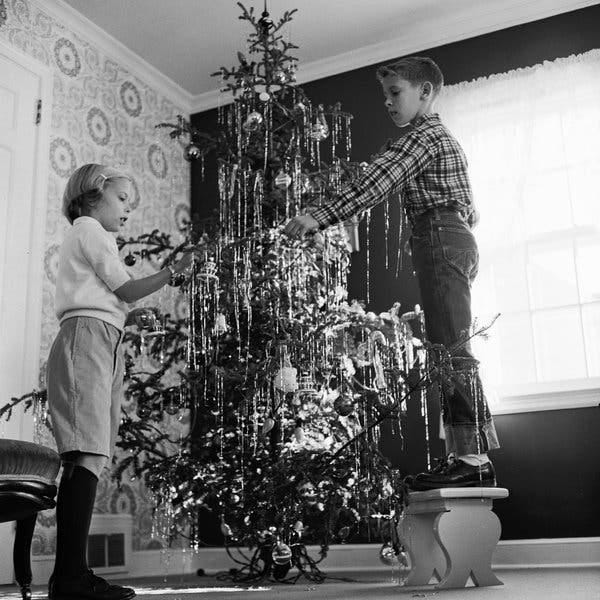
Growing the Christmas Tree Tradition
Regardless of its origins, the custom of the Christmas tree quickly spread throughout Germany and eventually gained popularity across Europe. German merchants imported the Christmas tree tradition into Britain in the early 1800s, where it quickly replaced what was once the centrepiece of English Christmas decor — the kissing branch or bough — an evergreen branch decorated with lit candles, apples and a branch of mistletoe. German immigrants brought the tradition to the United States, where it was widely embraced. Queen Victoria and Prince Albert, further popularised the Christmas tree in England during their reign and influenced its spread throughout the British Empire and beyond.
In Prince Albert’s native Germany, the Christmas tree had long been a cherished part of the holiday celebrations. When he married Queen Victoria in 1840, he brought with him his German traditions and customs, including the Christmas tree. An illustration published in the Illustrated London News in 1848, depicting Queen Victoria, Prince Albert, and their children gathered around a decorated Christmas tree, helped to popularise the tradition in England. The image struck a chord with the public, showcasing a royal family engaged in a joyful Christmas celebration centred around a beautifully adorned tree. The Christmas tree quickly gained popularity among the upper classes and soon spread to the middle and working classes as well as the colonies and territories under British rule.
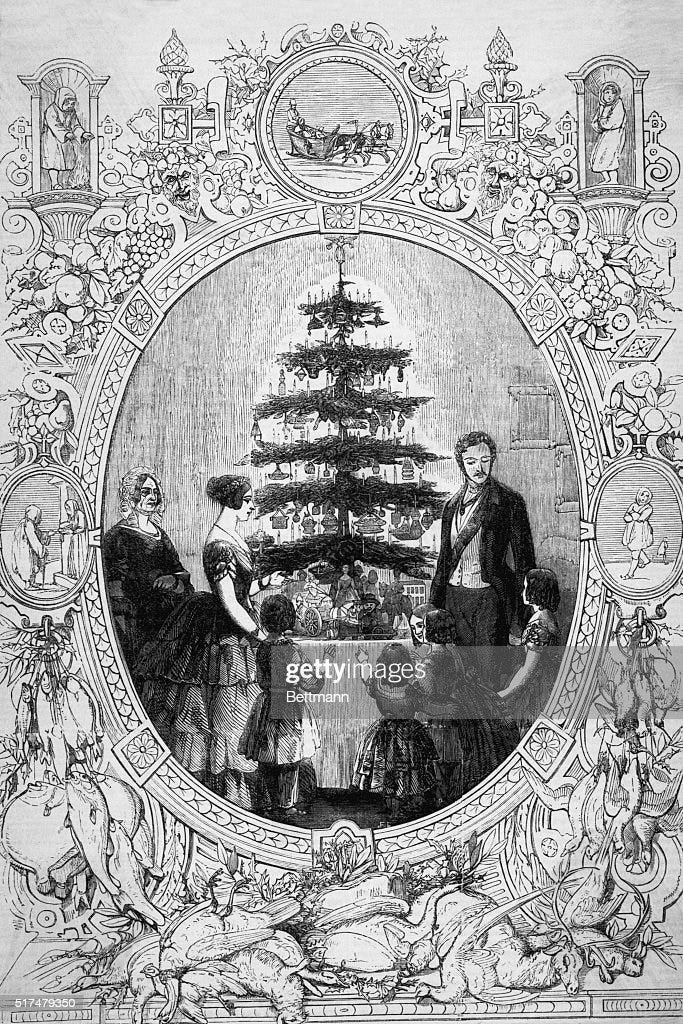
The Christmas tree became an integral part of Victorian Christmas celebrations, reflecting the era’s focus on family, sentimentality, and nostalgia. The custom of decorating the tree with candles, ornaments, tinsel and small gifts became more elaborate and widespread, further fueling the popularity of the tradition. Their influence not only contributed to the cultural significance of the Christmas tree but also helped to shape the way Christmas is celebrated to this day.
Today, the Christmas tree is a central and cherished Christmas or Yule tradition that brings families together as they gather to decorate the tree. It serves as a focal point for festive celebrations and embodies the spirit of the season.
I hope you are all looking forward to your own Yule, Midwinter or Christmas in July celebrations. Next week, we will explore the Scandinavian creatures of the Yule season, including the charming and ubiquitous Nisse or Tomte, the Julbok (Yule Goat), and the scary Yule Beasts: the Giant Yule Cat, the Yule Troll and her thirteen Yule Lads.
Until then… God Jul (Good Yule), Glaedelig Jul (Merry Yule) and Merry Yule!


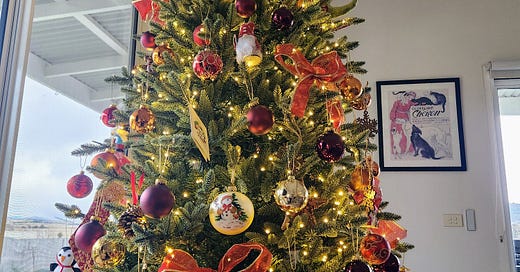


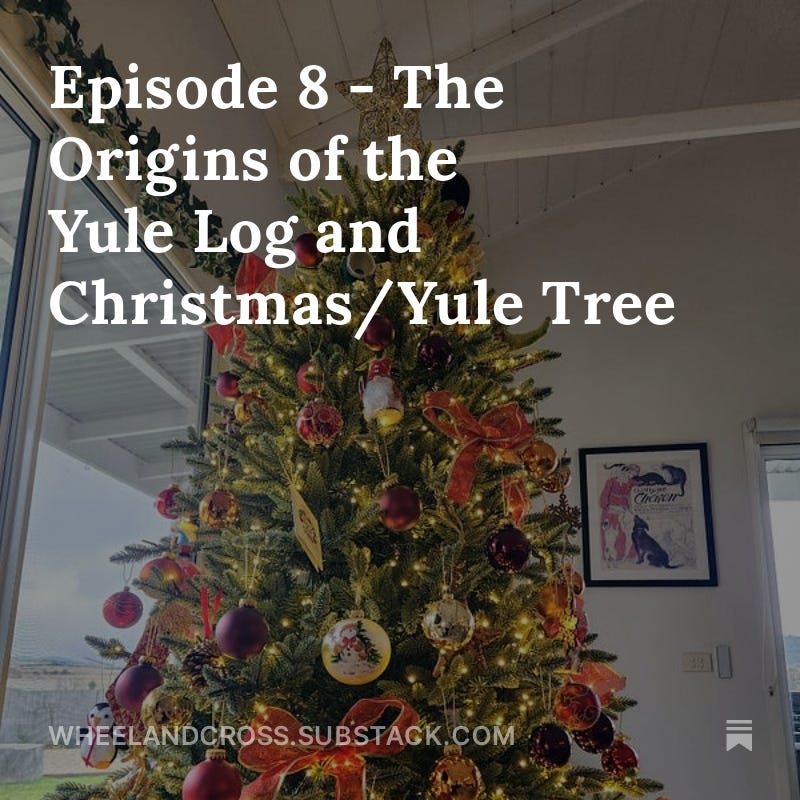
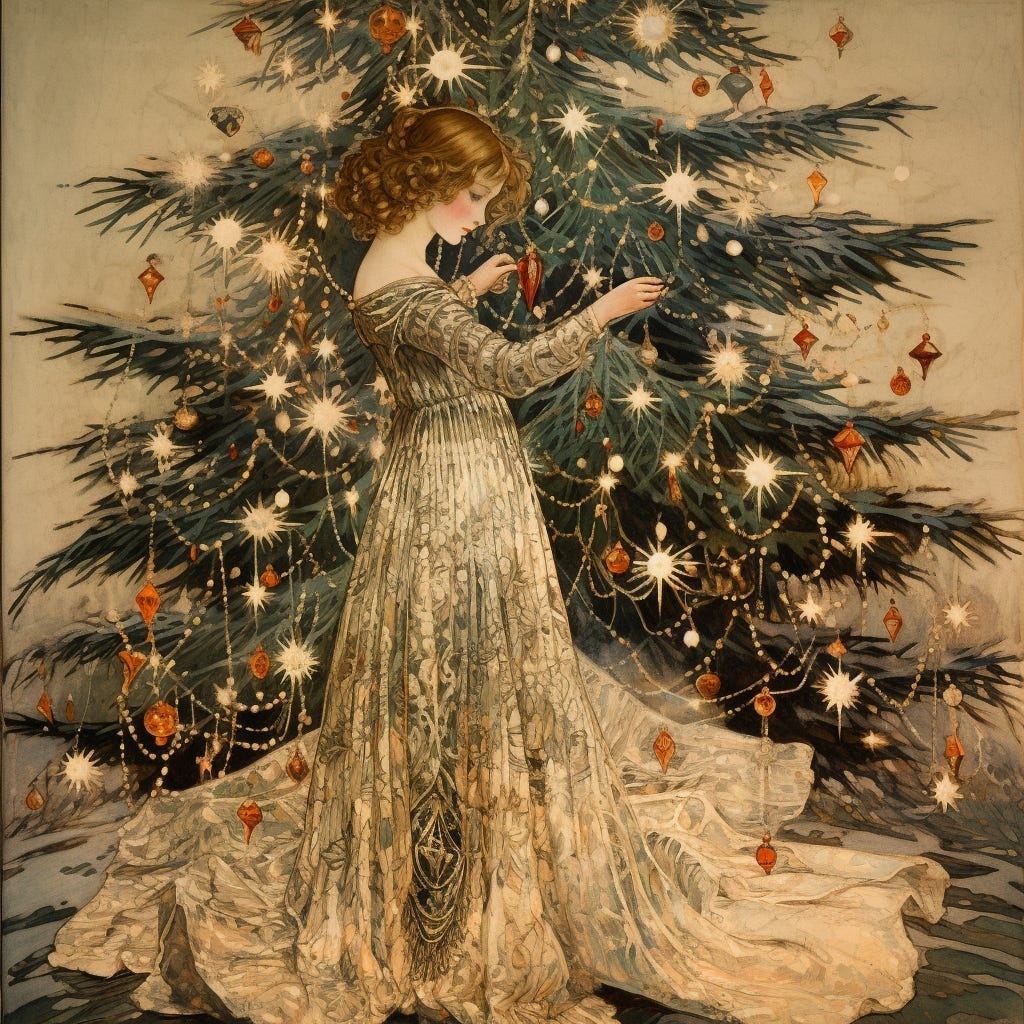




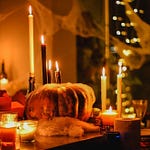




Share this post